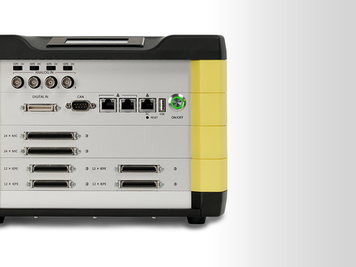In a real measurement environment, a sound field usually consists of a superposition of many independent sound sources which are caused by simultaneously occurring mechanical, thermal and aerodynamic processes. Due to the characteristics of conventional beamforming, it might not be possible to map all sources separately.
A method that improves source representation algorithmically is OBF. It uses the effect that sources can be tracked back to orthogonal eigenvectors of the cross spectral matrix \(C\) which enables a separation of sources. The separation results from the decomposition of \(C=V\Lambda V^H\)in its diagonal matrix of eigenvalues \(\Lambda\), its matrix of eigenvectors \(V=[V_1,\dots,V_N]\) and its transposed-conjugate matrix \(V^H\). Therefore, the \(i\)-th component of the cross spectral matrix \(C_i\) is calculated like:
$$C_i=\Lambda_{ii}V_i{V_i}^H,\qquad C=\sum_iC_i.$$
For the decomposition, it is assumed that the single non-coherent main sound sources are represented by the highest eigenvalues while all other eigenvalues are caused by random noise. The total number of components corresponds to the number of microphones \(N\) of the array. With the \(i\)-th calculated cross spectral Matrix \(C_i\) it is possible to apply a conventional beamforming approach \(B_i(\vec{x},\omega)\):
$$B_i(\vec{x},\omega)=g^H(\vec{x},\omega)C_ig(\vec{x},\omega).$$








